These JD-carrying exonerees are using their experiences to right wrongs
FREED AND PAYING BACK
Wrongly imprisoned, these men spent many years behind bars for crimes they did not commit. Plenty of convicted felons claim to be innocent; too many of them actually are. The criminal justice system stole from these men the carefree years of young adulthood. While many prisoners dream of going to law school, these three did it. Now they’re working to prevent others from suffering unjust imprisonments, and to eventually end the injustice of wrongful convictions.
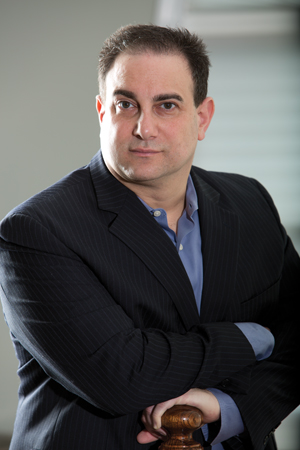
Photo of Marty Tankleff by Arnold Adler
MARTY TANKLEFF
It took an astounding array of forces to spring Marty Tankleff from a New York prison in December 2007: Armies of lawyers donated tens of thousands of hours—megafirms, small firms, plus Barry Scheck and the Innocence Project. A PR firm got his plight into the news. And there was a lot of luck.
Now he awaits his results on the New York bar exam. Tankleff, 43, until recently worked as a paralegal at the law firm that helped free him; and he is mapping out details for a nonprofit, possibly within the firm, in which law students will work at freeing the wrongly convicted when DNA evidence is not a factor. He also has been asked by a potential donor to explore the development of a program to give financial aid to struggling exonerees.
Arrested at age 17, Tankleff got an education in legal research and analysis in prison law libraries during his 17 years behind bars. He was sentenced to 50 years to life for the murder of his parents, Seymour and Arlene Tankleff, who were bludgeoned and had their throats slit late one night in 1988 in the wealthy family’s home in Belle Terre, New York, on Long Island.
Tankleff was released just days after a state appeals court ruled the trial court had been wrong to say newly discovered evidence pointing to the likely killer was not credible because some of the witnesses had criminal records.
He’s suing the police for using psychological manipulation to extract his false confession. Police flat-out lied to a weary, shocked kid in a classic interrogation trick that recently got the thumbs-down from New York’s highest court in another case. The state settled with Tankleff early last year for $3.4 million in his wrongful-conviction claim.
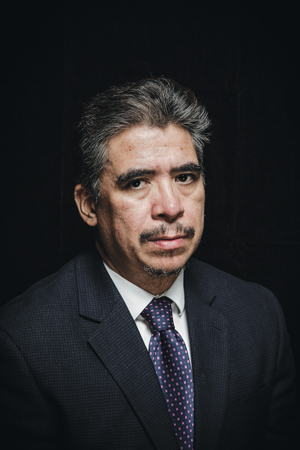
Photo of Chris Ochoa by Sara Stathas
CHRIS OCHOA
Chris Ochoa was 22 years old in 1988 when a chair-throwing, table-pounding Austin, Texas, police detective interrogated him for hour after hour. In a classic false confession, Ochoa lied to escape the death penalty. He was sentenced to life in prison, and he spent nearly 12 years there.
Ochoa was the first person exonerated through the efforts of the Wisconsin Innocence Project at the University of Wisconsin Law School in Madison, and he left prison in January 2001. He finished his undergraduate degree, then received a law degree in 2006 from the law school that freed him.
He’d had a chance at freedom in 1996, after eight years inside, when an inmate elsewhere wrote to authorities to confess to the crime. The letter included detailed information on where to find evidence, such as the handcuffs he used on the victim and the location of the gun he used to kill her. But inertia had greater force and authorities let it slide. After the innocence project got involved, DNA evidence proved the other man was the killer.
Ochoa, 48, did some minor criminal defense work when he finished law school, but quickly found a liking for property law. Yet he never fully adjusted in his return to society and only now is he working to resume the practice that fell into hiatus in 2011.
With a renewed interest in lawyering—particularly after getting more hands-on involved as a consultant in a wrongful-conviction case back in Texas—Ochoa recently began looking for CLE courses to reactivate his bar membership. His dream is to start his own nonprofit to help others who’ve been wrongfully convicted. And he has the comfort of receiving $146,000 a year, tax-free, through an annuity funded by a multimillion-dollar settlement with the city of Austin.
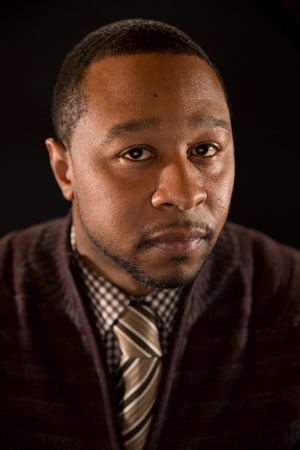
Photo of Jarrett Adams by Wayne Slezak
JARRETT ADAMS
Jarrett Adams says he became so good as a prison lawyer helping other inmates beat disciplinary charges that he was moved from a maximum security prison in Wisconsin to a so-called supermax facility, where “security threats” have much less opportunity to move about.
He was consigned to facilities for 25-to-lifers because he maintained his innocence at sentencing in 2000; for his lack of remorse about a rape, the judge tacked on another eight years to a 20-year sentence. He was arrested at age 17 and held in jail for nearly 1 years before his trial. He spent almost 8 years behind bars before the Wisconsin Innocence Project won his release in January 2007.
Adams and two other teens were charged with raping a college student who’d invited them into her dorm room. Lawyers from the innocence program persuaded the 7th U.S. Circuit Court of Appeals at Chicago that his court-appointed lawyer provided ineffective counsel. The court noted that the lawyer failed to call a witness who saw the woman, after the alleged assault, in a common area of the dorm with the men, all enjoying cigarettes.
Only one of the teens had the resources to retain a lawyer, and he got a separate trial. His lawyer used that witness, the court continued, getting a hung jury and ultimately a dismissal.
Adams holds no grudge against the woman who implicated him: She had told her boyfriend and then a friend that she was raped, but didn’t contact police. The friend later called the authorities.
“I’m not mad at this girl,” Adams says, “because I can put myself in her shoes of embarrassment on campus. We were all kids, and the adults should have sorted it out.”
Now a 34-year-old 3L at Loyola University Chicago School of Law, Adams is mapping a career “to do the exact same work that got me home,” he says. He’s soon to be a public interest fellow with Judge Ann Williams of the 7th Circuit and, since the fellowship is unpaid, he’s started a GoFundMe donation account to defray his bills.
A VERY FEW
Given the more than 1,400 confirmed exonerations in recent decades, it was inevitable that some of the wrongfully convicted would move from sitting in the dock to being officers of the court. Still, it is both surprising and understandable that theirs is a tiny universe. Many of the wrongly convicted come out of prison with a fire in the belly, but few might negotiate the rigors of law school.
Experts are certain the number of exonerees comprise an iceberg’s tip of the wrongly convicted still held, so the men featured here beat odds little better than winning a state lottery, despite the convincing factors of their innocence.
These three men are focused primarily on helping others who were wrongfully convicted. In a world where a leg-up is often necessary, they were weighted down. Each lost a huge chunk of young-adult life to the dreary monotony and dangerous disciplines of survival in perhaps our most Darwinian social environment.
Yet exoneration can revive the faith in humanity prison life would kill. For example, on Ochoa’s freedom flight to Wisconsin after his release, a law student accompanying him got on the airplane’s PA system to tell the story of this particular passenger who just spent many years in prison for another man’s crime.
Someone passed an air sickness bag along the aisle, and it soon was stuffed with about $700 in cash, an impulsive measure of public horror at wrongful convictions and sympathy for those wronged.
The impulse to right such wrongs is behind the burgeoning legal efforts of innocence projects across the nation. And that has changed the lives and the life stories of these men.
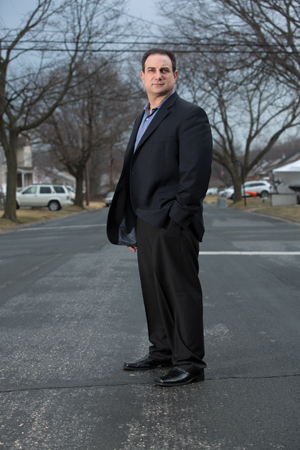
A combination of hard work and serendipity freed Marty Tankleff from prison after being wrongfully convicted of murdering his parents. Photo by Arnold Adler.
BATTLING THE BEAST THAT BIT YOU
Under New York law, Tankleff had to sue for compensation in the Court of Claims. Last year he received a multimillion-dollar settlement. Soon he launched the Martin and Laurie Tankleff Scholarship (named for himself and his wife), to be awarded annually to a student with an interest in wrongful convictions by his alma mater, the Touro College Jacob D. Fuchsberg Law Center.
Soon after entering prison, Tankleff became a jailhouse lawyer and spent nearly all the remainder of his hard time working in the prison library, mostly helping others. He was in his early 20s and looking at decades behind bars, but he says: “I knew then that someday I’m going to get out and I’m going to go to law school and I’m going to work on wrongful convictions.”
Without DNA evidence, the matter of Tankleff’s innocence took more than all the king’s men and horses. Juries want to believe confessions, and that was pretty much the sum of the evidence against him.
“To get this one guy out took an unbelievable amount of work,” says Bruce Barket, co-founder of Barket Marion Epstein & Kearon in New York City and the lawyer Tankleff first reached out to from prison. Barket then hired Tankleff, who continued working at the firm while in law school and until recently, though he may return.
And it took luck. Among a series of serendipitous events: A woman eventually came forward to say that a few years after the murders, a man had bragged at her dinner party about being involved and mentioned as an accomplice Tankleff’s father’s business partner, who owed Seymour Tankleff half a million dollars; another inmate Tankleff met in a courthouse holding cell suggested he contact Barket, whose investigator would develop a faint lead into a major opening; a high school classmate interning at a big Washington, D.C., law firm suggested Tankleff’s case to lawyers there looking for a pro bono project.
“It was like a domino effect,” Tankleff says. “One thing led to another to another to another.”
The effort was joined by lawyers from well-known national and international firms: Baker Botts; Clifford Chance; Miller & Chevalier; Paul, Weiss, Rifkind, Wharton & Garrison; Kelley Drye & Warren; Rogers & Wells; Ropes & Gray; and Wilmer Cutler Pickering Hale and Dorr.
Friend-of-the-court briefs carried the names of 31 former New York prosecutors—county, state and federal—and four retired judges. They asked the Supreme Court, Appellate Division, Second Department of New York to find that the trial court was wrong to dismiss new evidence simply because some of the witnesses had criminal records.
In December 2007 the appellate court agreed, noting that there was “a probability that, had such evidence been received at the trial, the verdict would have been more favorable to the defendant.”
The conviction was vacated and Tankleff released. Months later the state moved to dismiss the charges, saying there still was some evidence of his guilt, but not enough. That hedge could have been because, as expected, the state would soon have to defend against Tankleff’s suit for wrongful conviction.
Just as inevitable is the federal lawsuit against the detective who interrogated Tankleff, as well as against other police officers and county officials, in Tankleff v. County of Suffolk, in the Eastern District of New York. The judge has declined to dismiss Tankleff’s claims of coercion, fabricating evidence and denial of his right to counsel.
In building the case, Tankleff’s lawyers deposed the late Seymour Tankleff’s business partner in a bagel business, Jerry Steuerman, only to hear him invoke his Fifth Amendment privilege 146 times. Just days after the crime, Steuerman had emptied the joint business account, changed his appearance, assumed an alias and moved to San Francisco.
QUESTIONABLE METHODS
When his parents were murdered in September 1988, Tankleff, who was just starting his senior year of high school, was immediately suspected and was badgered in a lengthy interrogation by a seasoned police detective.
Though the teen’s mother died in the attack, his father lingered in a coma for a month. During the interrogation, the detective went into an adjoining room where Tankleff could hear him and pretended to be on the phone with another police officer at the hospital. He then told Tankleff his father had roused from the coma and said Marty did it.
None of it was true. Using the Reid technique for interrogators, developed in the late 1940s and still the most widely used approach, the detective led Tankleff to believe he had blacked out and done the crime without any memory of it.
TACTICAL PRIMER
A pertinent critique of the technique had been published two decades earlier, in 1966. It detailed the importance of having the suspect alone, showing confidence in his guilt, getting him to confirm the interrogator’s preconceived story, and asking unrelenting questions so as to “patiently maneuver himself or his quarry into a position from which the desired objective may be obtained.” If all that fails, then perhaps “resort to deceptive stratagems. … The police then persuade, trick or cajole him out of exercising his constitutional rights.”
That was written by Chief Justice Earl Warren as part of his reasoning in the landmark Miranda v. Arizona decision, which said a criminal suspect must be apprised of the right to have a lawyer and of the possibility of self-incrimination through any statements to law enforcement officials. The pertinent footnote for that paragraph and the quotes within it cite the 1953 edition of Lie Detection and Criminal Interrogation by Fred Inbau and John Reid.
The opinion seemed to find those practices somewhat odious, but offered as remedy only a transfer of information—the Miranda warning—that might level the interrogation-room table. It was this sort of psychological gamesmanship that had Tankleff briefly believing he’d slain his parents. Tankleff quickly recanted, but the machinery already was in motion. A jury convicted him in June 1990, just over two years after his arrest.
Last year, seven New York Court of Appeals judges unanimously ruled that a 9-hour interrogation in another case had crossed over the line. It had been completed in two sessions, the court noted, because the defendant, accused of killing his infant son, became suicidal just two hours into the interrogation and was briefly admitted to a psychiatric ward.
The court found in The People v. Adrian P. Thomas that the defendant’s “inculpating statements were not demonstrably voluntary.” The court noted, though, that “it is well-established that not all deception of suspect is coercive, but in extreme forms it may be.”
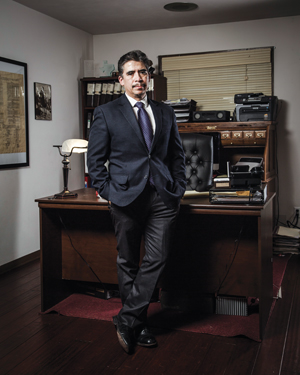
Inadequate legal representation led to Chris Ochoa’s prison sentence for rape and murder until an innocence project won his release. Photo by Sara Stathas.
OFT-TOLD WOES
Ochoa has been asked to tell his stories so many times, including on national television, that they often roll out in a monotone. He was 22 years old and employed at a Pizza Hut when a woman working at another pizzeria in Austin was raped and shot to death late one night. Some days later, Ochoa and a co-worker visited that other location and hoisted beers to toast the woman, rousing the suspicion of a worker there. Police soon had the two young men under interrogation.
Over a period of two 12-hour sessions, a detective told Ochoa that he would be “fresh meat” for other prisoners; showed him photos of death row; explained the details of lethal injection. He then said Ochoa’s buddy had implicated him. Ochoa caved and both went to prison.
He says his court-appointed lawyer, who was paid a flat fee, ignored his repeated claims of innocence and guided him to a plea agreement, which amounted to a couple of hearings and done.
Years later, after the actual killer confessed following a religious conversion, Ochoa held fast to his confession. He feared the death penalty that much. A new investigation fizzled.
It would be a few more years before he was freed.
When the Wisconsin law school innocence program investigated the case, Ochoa’s defense lawyer told a law student that there was “not a chance” Ochoa was innocent, and that Ochoa had lied to him repeatedly before finally deciding to do the right thing and tell the truth, meaning take the plea agreement.
“It made us pause, and we were close to walking away after that,” says Keith Findley, co-founder and faculty director of the Wisconsin Innocence Project. “He said that everything Chris told us was not true—that there was no gun, no prints, no witness.”
But the innocence project stayed on it and determined that the real killer’s confession and the evidence he offered up panned out.
Ochoa had been wholly truthful. He filed a claim against the city of Austin and received a $5.3 million settlement.
EUREKA MOMENT
Recounting one case early in his own career as a lawyer, Ochoa breaks from his monotone. He represented a man facing 14 years in prison for a burglary he didn’t commit.
“It was the one satisfactory case I had,” says Ochoa, who started practicing in 2006 in Wisconsin. “He kept saying he was innocent, over and over, and I remembered that’s what I kept telling my attorney in Austin, and he didn’t listen to me.”
Ochoa learned of audio recordings of the interrogation. He found that police reports based on the recordings had been “amended and doctored up.” There would be no plea bargain.
When it was time to pick a jury, Ochoa played the recording for the prosecutor for comparison with iterations of the police report. “I told him, ‘This is where your officer lied,’ ” Ochoa says. “The amended report doesn’t match what my client said.”
The case was dropped.
That heady accomplishment could carry Ochoa only so far, and for so long. Because he enjoyed the cleaner intricacies of property law more, he took up the state bar’s request for lawyers to undergo training to litigate on behalf of homeowners in the foreclosure madness that had taken hold in 2007.
“But I burned out after about five or six years,” Ochoa says. “I’d never taken a break after getting released, and I was losing passion. From the time I left prison, I was always running to catch up and hadn’t made time for myself. I didn’t know what I was inside.”
Ochoa’s career juices returned during his hiatus from the law when a friend asked that he consult on the false-confession, wrongful conviction case of a man from his hometown of El Paso. He provided significant help, though not in a lawyer’s role. The Wisconsin Innocence Project got involved and the man, arrested at age 16 for a double murder and released last year at age 37, now faces retrial.
“Just because I’m an exoneree doesn’t mean I’m an excellent post-conviction attorney,” Ochoa says. “I want to be the guy in the background pulling strings to help make it happen. I like being a consultant. But I’m going to be renewing my law license.”
Though Ochoa is on the board of the innocence project that freed him, he wants to start his own nonprofit foundation for wrongful convictions. Through fundraising, it would offer logistical help to those who have been exonerated, such as providing a laptop computer or other out-of-pocket expenses for school.
“Along with the philanthropy work and maybe consulting on a false-confession case, I’d also want to take one or two clients at a time to keep my courtroom chops, but very limited,” Ochoa says. “Maybe a felony or big property case.”
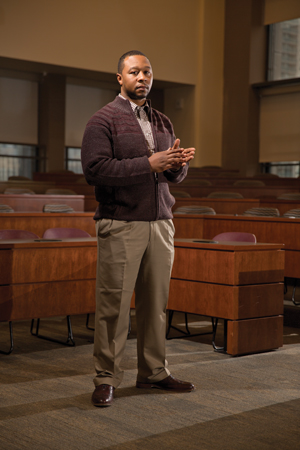
Imprisoned on rape charges after his lawyer failed to call a key witness, Jarrett Adams helped other inmates appeal disciplinary charges. Photo by Wayne Slezak.
JUSTICE TOO BLIND?
Adams is about to finish law school, which he entered possessing a surfeit of real-world experience in the intricacies and flaws of the criminal justice system. And he remains amazed at the three very different outcomes for the three defendants in his case.
The one who could hire a lawyer got his case dismissed and no prison time. After more than eight years, Adams was freed and the case, remanded for retrial in light of the exculpatory evidence, subsequently was dismissed by the prosecutor.
The third man, whose early jailhouse habeas petition time-barred him from help by the innocence project, served nearly a year more than Adams. He was released sooner than designated when the trial judge said modifying the sentence was in the interest of justice. Still, he remains on the sex offender list. He is not permitted to pick up his child at day care.
“It was the same case, the same allegations and the same evidence, yet the criminal justice system treated all three of them wildly differently,” says Findley, who represented Adams post-conviction and the co-defendant who was not exonerated.
“The police report on this witness was in the file all along,” Findley says. “This is one case that just eats at me as one of the biggest injustices I’ve ever encountered.”
Adams intends to counter injustice. While in school, he has been working at Chicago’s Loevy & Loevy, a uniquely positioned 25-lawyer firm with mostly former big-firm litigators now pursuing civil rights and whistleblower cases, mixing principles and profits.
“Jarrett found us because of what we do,” says Jon Loevy, who left Sidley & Austin to start the firm in 1997. “Some say when they get out of prison they’re going to do something about the system that put them there, and then forget as soon as they get out. Some like Jarrett say they remember and do something about it.”
Adams got his start during a 4-year stint at the maximum-security Green Bay Correctional Institution in Wisconsin. During downtime while working on his own pro se appeals, he began helping other inmates he believed were being wrongly punished for infractions they did not commit. Many couldn’t read or understand the charges against them and would plead guilty, losing good-behavior time toward early release.
“I started advocating for them and I started winning,” says Adams. When wrongful reports against inmates were “rubber-stamped,” Adams says, he would file appeals at the Dane County courthouse for judges there to decide.
“I started winning and guys were coming back from segregation,” Adams says, adding that he succeeded in cases for half a dozen inmates. “They were given back all their good time, their jobs and back pay. They were brought back from solitary in the hole on 24-hour lockdown.”
He might have helped more of them, Adams says, but he was moved from the facility.
“They told me my conduct was inciting to riot, but it was just inmates telling others: ‘That little brother up there with the glasses argued and got me my good time back.’ Guys were talking about it, so I was accused of inciting.”
And he was moved to the Wisconsin Secure Program Facility at Boscobel, a supermax prison. Treatment was notoriously harsh, and the American Civil Liberties Union and others sued the prison for abuses. Adams spent 19 months there. He could leave his cell for just two hours a day, down from the seven or eight hours he was accustomed to.
Had he shown remorse at sentencing for the crime he didn’t commit, Adams would have gotten a lesser sentence and not qualified for a facility holding those deemed security threats.
When he was 15, Adams’ parents moved the family away from the tough streets of Chicago’s South Side to the suburban village of Hazel Crest for him to finish high school. Adams had not been in trouble. He breached that effort and his own good sense when he and two buddies visited a college campus in Wisconsin.
They were playing video games with a male student in a dorm room when two young women invited them up to their room, though one of the women stopped to visit someone else along the way. Adams stayed behind with the student, who later saw the group laughing and enjoying cigarettes after the alleged assaults.
Adams had eventually followed his buddies and found they were being given turns at sex with the young woman. He took a turn.
“We were foolish adolescents and we didn’t have any business being in Wisconsin,” Adams says. “I lied to my parents by saying I was going to a party. And that was the downfall of my adolescence right there. One stupid lie.”
In 2009, Adams was denied Wisconsin’s $25,000 compensation for exonerees because he had not been proven innocent by clear and convincing evidence.
CORRECTING THE UNPARDONABLE
High numbers of wrongful convictions were inevitable in recent decades. Law enforcement authorities were battling the crack cocaine epidemic, which brought with it other crimes that sent case-file stacks to the ceilings. Many cases were closed based solely on testimony by jailhouse snitches. And tough-on-crime politics helped foster police and prosecutorial cultures that tolerated or encouraged hardness and expediency.
As the innocence movement progresses and the system absorbs the inevitability of reforms, the expectation is that wrongful convictions will become both more easily identifiable and more rare. Whatever they might accomplish, the lawyers featured here have climbed higher than seemed imaginable when they counted days and years in prison cells for crimes they didn’t commit.
They are officers of the court.
This article originally appeared in the May 2015 issue of the ABA Journal with this headline: “Freed and Paying Back: Against all odds, these JD-carrying exonerees are using their experiences to right wrongs.”
Sidebar
THE INNOCENCE MOVEMENT
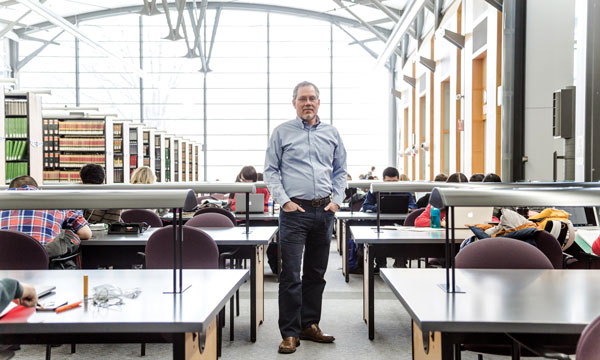
Keith Findley is the co-founder and faculty director of the Wisconsin Innocence Project at the University of Wisconsin Law School, which won the releases of both Chris Ochoa and Jarrett Adams. Photo by Sara Stathas.
The pace of exonerations has picked up in recent years—not so much because of the use of DNA evidence, but through the rapid growth of innocence projects. (When specimens are available, DNA tests now are often done at the outset of an investigation and mostly prevent wrongful convictions.)
The first innocence program, created in 1983, was Centurion Ministries in Princeton, New Jersey. It predated the science of DNA for criminal investigations.
A few years later, DNA tests became sophisticated enough to be accepted by courts, and in 1992 Barry Scheck and Peter Neufeld founded the Innocence Project to use DNA evidence in proving wrongful convictions. The project at the Benjamin N. Cardozo School of Law at Yeshiva University in New York City has been the most successful such effort, with more than 300 exonerations.
In the late 1990s came the next generation with the launches of the Wisconsin Innocence Project at the University of Wisconsin Law School in Madison and the Center on Wrongful Convictions at the Northwestern University School of Law in Chicago.
The expansion in law schools has developed swiftly, which is largely responsible for innocence projects now in nearly every state, says Steven Drizin, a clinical professor and assistant dean at Northwestern’s Bluhm Legal Clinic. In 2013, he stepped down after 8 years as director of the clinic’s Center on Wrongful Convictions.
More recently the movement has seen the development of conviction-integrity units in prosecutors’ offices: There are 15 of them around the country in state and local jurisdictions, and last September the U.S. attorney’s office in Washington, D.C., which prosecutes both federal and D.C. Superior Court (state-equivalent) crimes, launched one. And increasing numbers of jurisdictions now video-record interrogations.
The innocence movement’s rapid growth has helped spur efforts for significant reforms in areas such as exoneree compensation, handling of suspect identification by witnesses (including statements of confidence at the time and more careful administration of lineups), and custodial interrogation especially, where recording interrogations can shine light on abusive interrogation tactics that lead to false confessions while protecting law enforcement from allegations of using such tactics.
“I think we’re seeing the biggest reform of the criminal justice system since the Earl Warren court in the 1960s,” Drizin says. “Reforms aimed at increasing the accuracy of the criminal justice system are happening at a very accelerated rate.”



